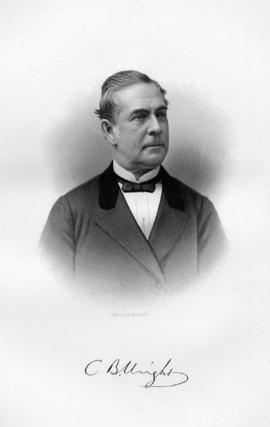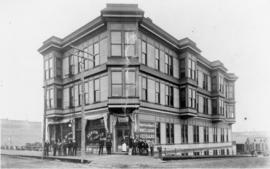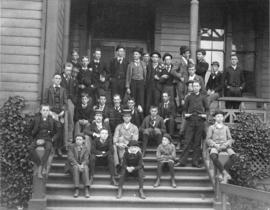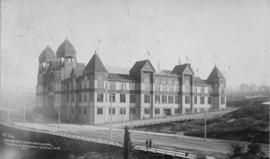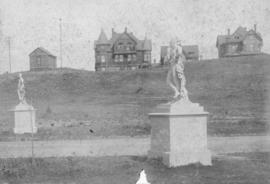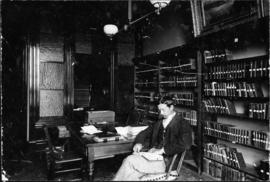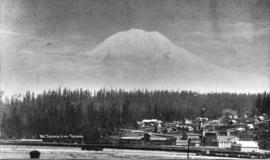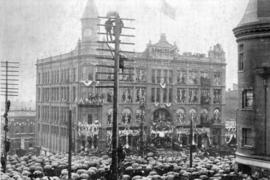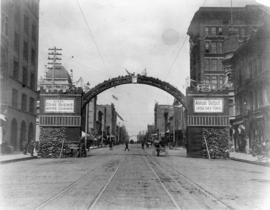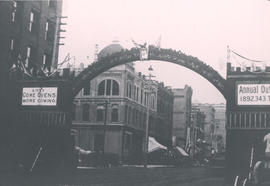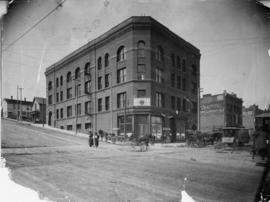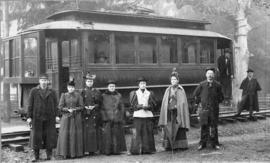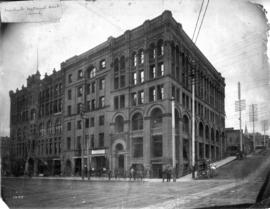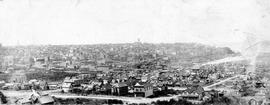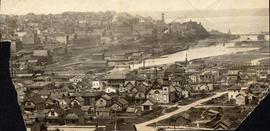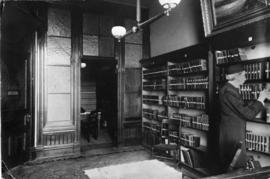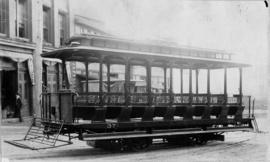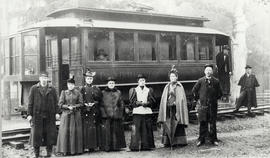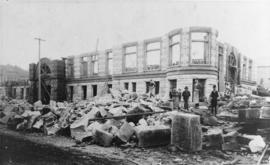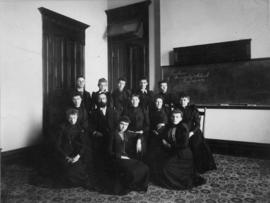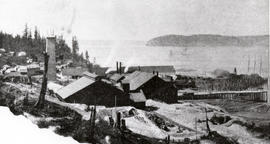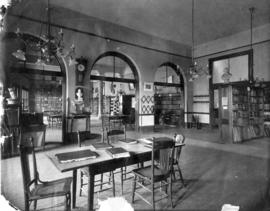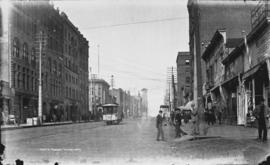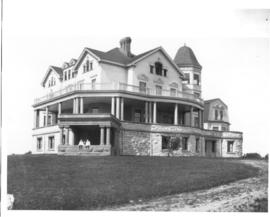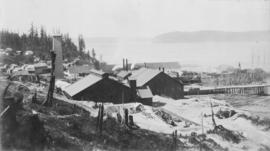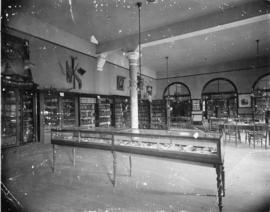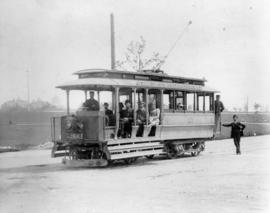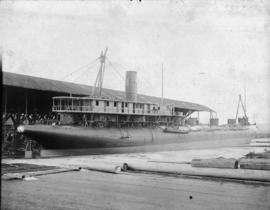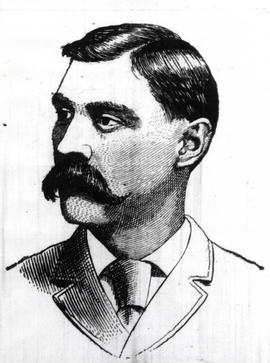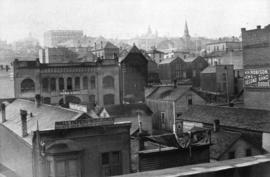The faculty of University School posed in a classroom on May 20, 1892. University School, on I St. at the corner of 21st, occupied the massive building from 1891 to 1924. It had previously been the location of Puget Sound University (later the University of Puget Sound, College of Puget Sound). James S. Lewis, Lincoln High School principal, was University School's first principal. The school opened in the fall of 1891 with eleven teachers for grades one through eight. As the above photograph was taken in May of 1892, this is presumed to be the first faculty of the new school including principal Lewis. Per the 1892 Polk Directory, teachers named were: Mattie A. Smythe (6th, 7th, 8th grades), Nettie E. Clarke, Asst. (6th, 7th, 8th), Mary Gilliam (5th, 6th grades), Alice Thornberry (4th grade), Hattie Messinger (A 3rd grade); Edith J. White (B 3rd grade), Clara Heilig (2nd grade), Jennie McGinnis (A 1st grade), Ella Osborne (A 1st grade), Lillian Hargear (B 1st grade), Mary A. Bovelle (C 1st grade) and John W. Clark, janitor. The name of the school was changed in 1896 to Logan School to honor Civil War Union Army Gen. John A. Logan, who helped to found the Grand Army of the Republic (G.A.R.) veterans' organization. Logan School closed in 1924 and the building was demolished the following year to make way for McCarver (Intermediate) School. (Olsen: For the Record, p. 71-72, various photographs; 1892 Polk Directory, p. 64-list of faculty)
University School (Tacoma); Logan School (Tacoma); Public schools--Tacoma--1890-1900; Teachers--Tacoma--1890-1900; School principals--Tacoma; Lewis, James S.; Classrooms--Tacoma--1890-1900;
